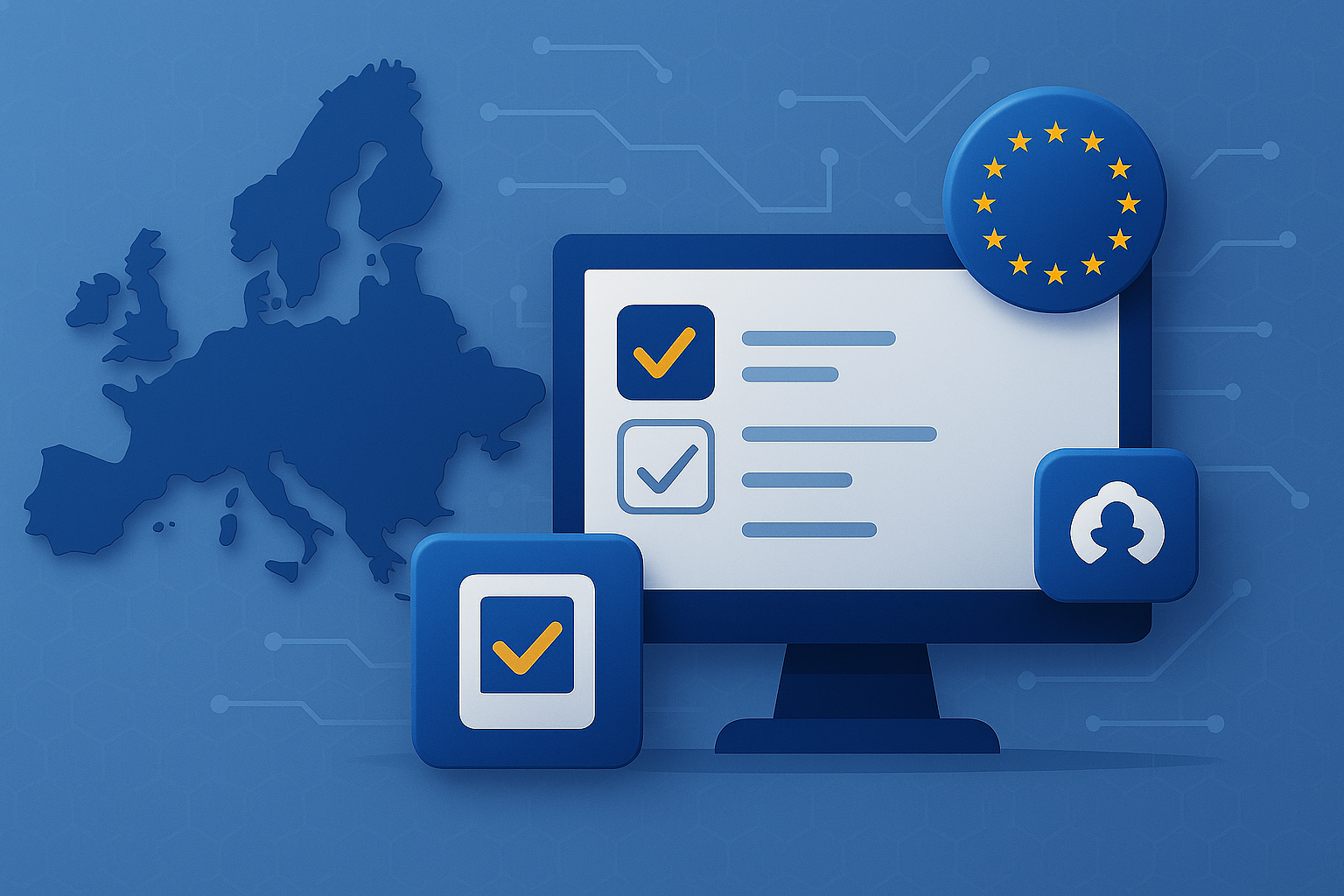
Introduction
Voting is the cornerstone of democracy. In recent years, digital transformation has raised a crucial question: what is the future of electronic voting in Europe?
Several countries have already experimented with e-voting in different forms, with varying levels of success. Estonia is often considered an international model, while other nations remain cautious due to concerns about security, transparency, and citizens’ trust.
This article explores the prospects, risks, and opportunities of e-voting in Europe, linking them to the broader debate on digital democracy.
First steps: experiences in Europe
Estonia was the first country in the world to introduce nationwide electronic voting (since 2005). Its i-Voting platform allows citizens to cast their ballots online using digital identity.
Other countries have experimented more cautiously:
- Switzerland: cantonal tests of online voting platforms, often suspended due to security concerns.
- France: electronic voting for specific contexts, such as trade union elections or citizens living abroad.
- Germany: the Constitutional Court expressed reservations about the transparency of e-voting systems.
These experiences illustrate a fragmented and still evolving landscape.
Main challenges
The future of e-voting in Europe will depend on addressing several critical issues:
- Cybersecurity: the risk of hacking is a major obstacle. Systems must be tamper-proof and resilient.
- Transparency and verifiability: citizens must be able to verify that their vote has been correctly recorded without undermining secrecy.
- Digital inclusion: not all citizens have the skills or tools to vote online. Vulnerable groups risk exclusion.
- Institutional trust: the success of e-voting also depends on citizens’ trust in institutions and digital systems.
Opportunities and benefits
Alongside the challenges, e-voting offers significant benefits:
- Accessibility: enables remote voting, useful for citizens abroad or those with mobility issues.
- Faster counting: results can be processed almost instantly.
- Cost reduction: several studies, such as the Estonian cost comparison, indicate that e-voting can be about half the cost per vote compared to traditional paper-based voting, mainly by cutting expenses on ballot printing, ballot box logistics, and polling staff. However, significant investment is still required for cybersecurity and digital infrastructure, as highlighted in RAND Europe’s study on remote voting solutions.
- Broader participation: research from the European Parliament Research Service suggests that online voting may boost turnout, especially among younger voters.
European regulations and policies
The European Union has not yet adopted a single regulation for e-voting but has established some key principles:
- Data protection: in line with the GDPR.
- Cybersecurity standards: developed in cooperation with ENISA, the EU Agency for Cybersecurity.
- Interoperability: the need for systems to operate across different member states.
Future perspectives
The future of e-voting in Europe may evolve under three possible scenarios:
- Gradual adoption: some countries could follow Estonia’s path, introducing e-voting first locally and then nationally.
- Hybrid model: online voting could coexist with traditional paper ballots, giving citizens more options.
- Limited experimentation: some states may continue testing e-voting only in specific contexts, without scaling to national elections.
E-voting and blockchain
One of the most discussed technologies is blockchain, which promises transparency and traceability. Pilot projects in Switzerland and the United States have explored blockchain-based voting systems.
Blockchain could address some issues of security and verifiability but also raises concerns about scalability and privacy. This topic will be addressed more fully in the article Blockchain and e-voting: opportunities and risks.
The role of communication
The success of e-voting depends not only on technology but also on how it is communicated. As discussed in Checklist for effectively communicating a participatory process, transparency and accessible information are essential for building trust.
Reflections for Concorder
Projects like Concorder can serve as a testing ground for secure and transparent online voting. Its features include:
- secure digital voting management,
- audit trails to track every step of the process,
- automated synthesis of deliberations,
- support for hybrid voting (online and in person).
Concorder could be used for local and community-level experiments, contributing to scalable models that may inspire European adoption.
Conclusion
The future of e-voting in Europe is open and complex. Experiences so far show that there is no single solution but multiple approaches depending on the political, social, and technological context.
E-voting has the potential to become a fundamental tool for strengthening digital democracy, provided it is introduced carefully, ensuring security, inclusion, and transparency.


